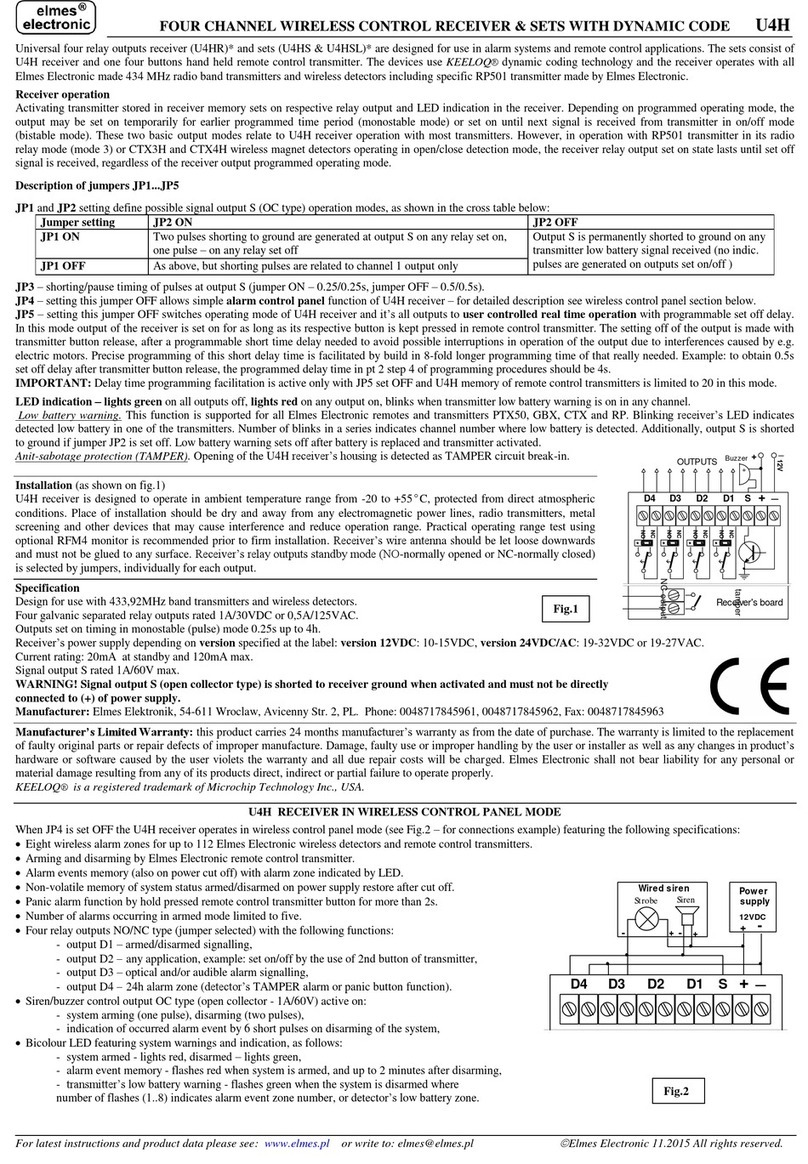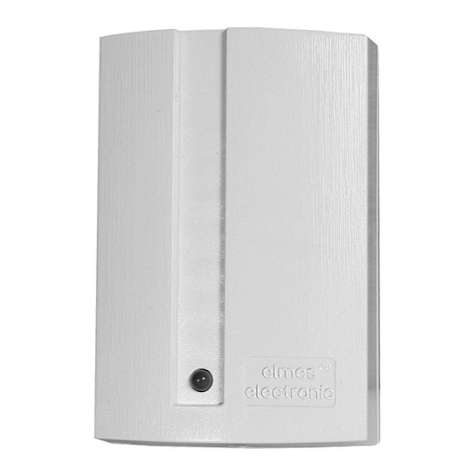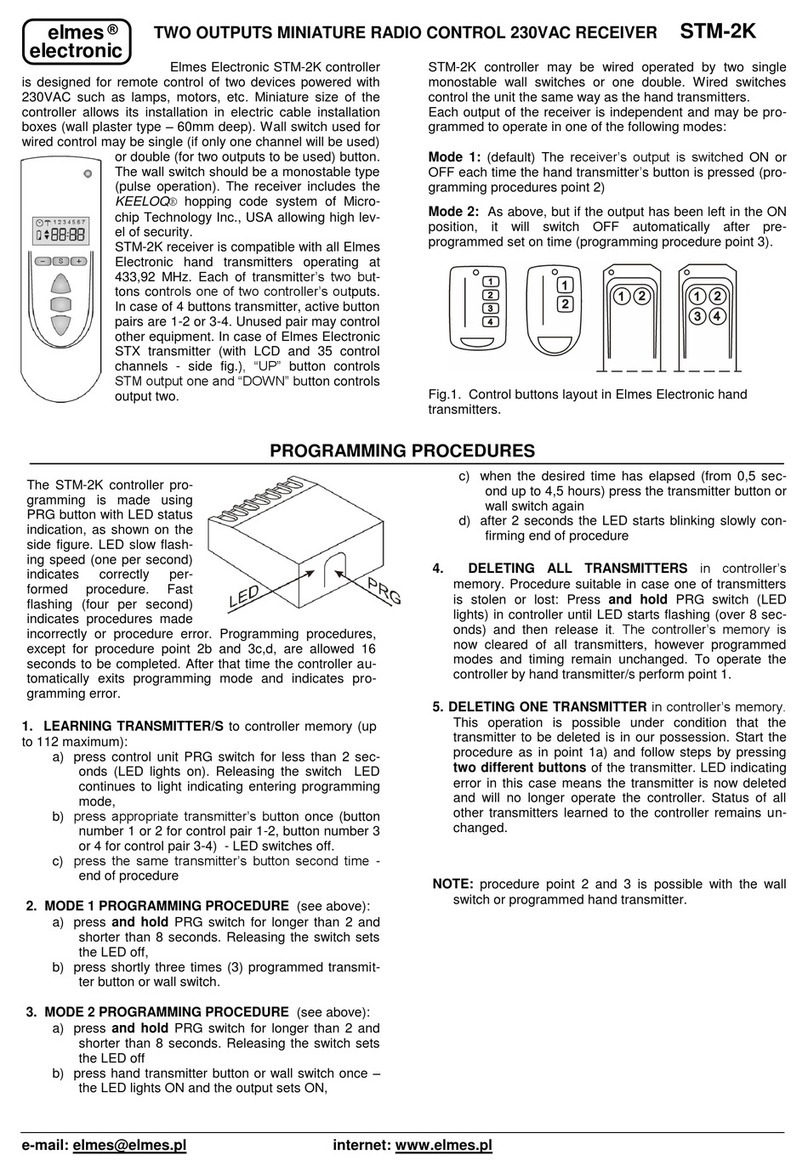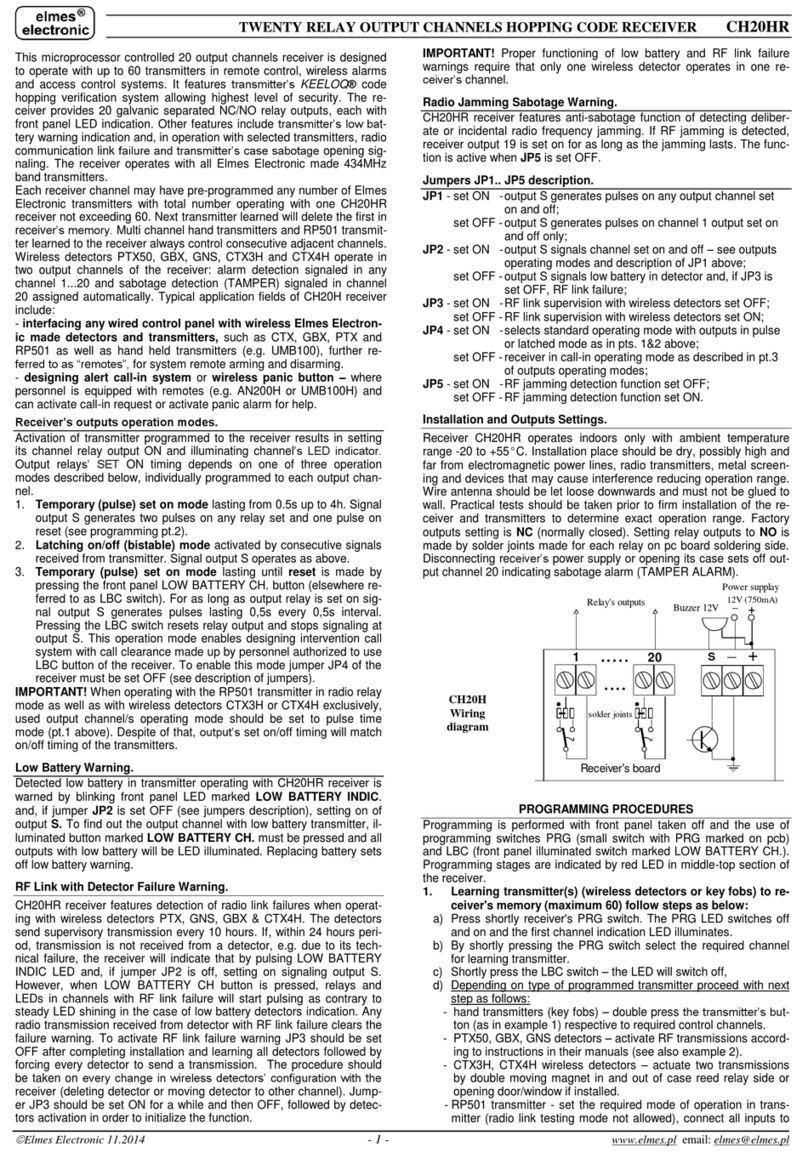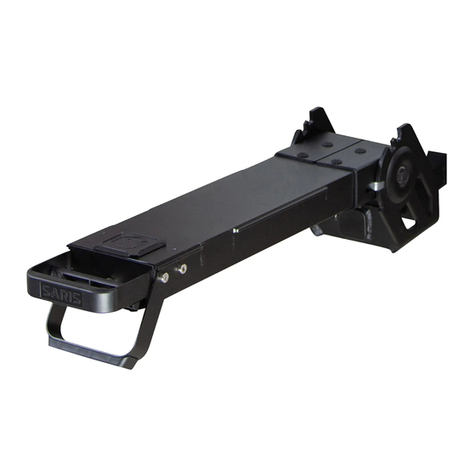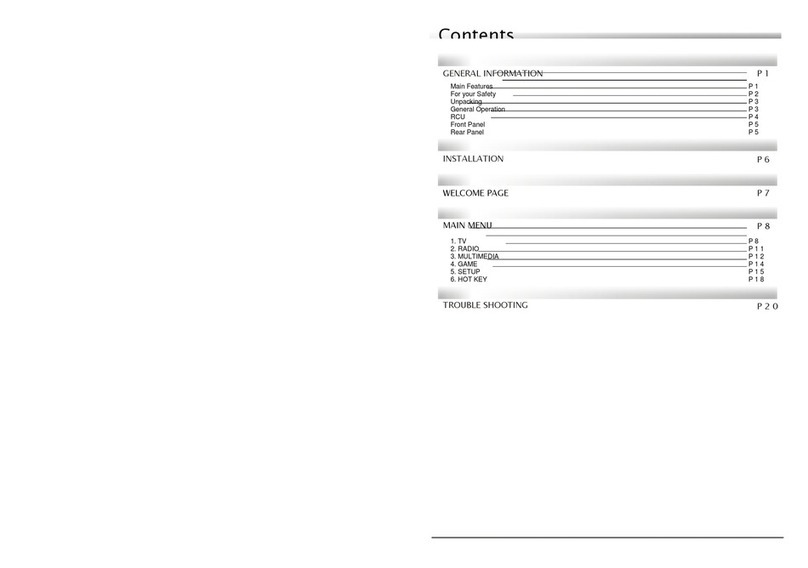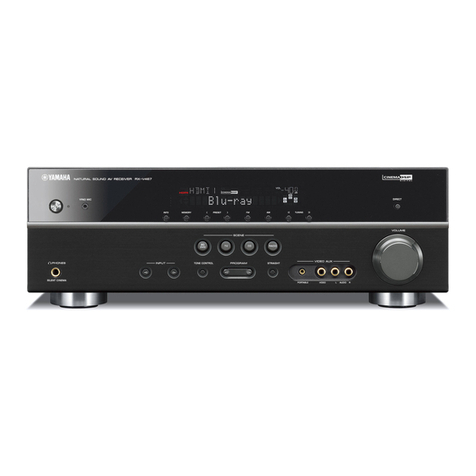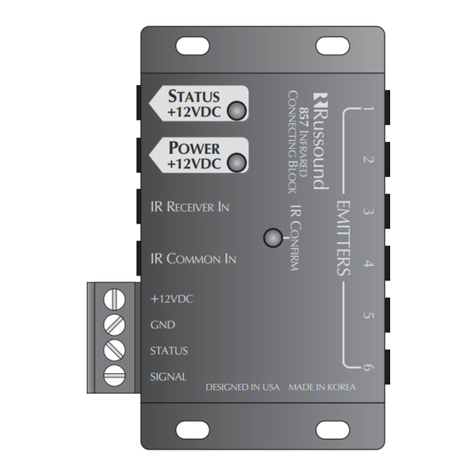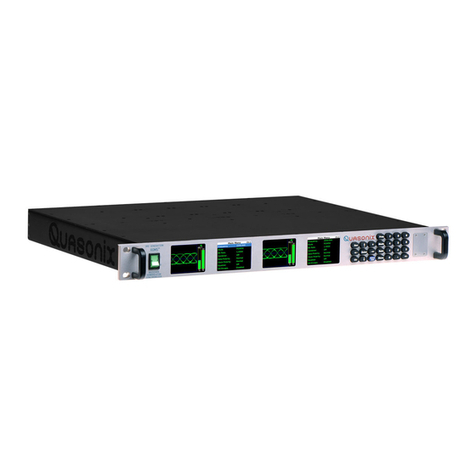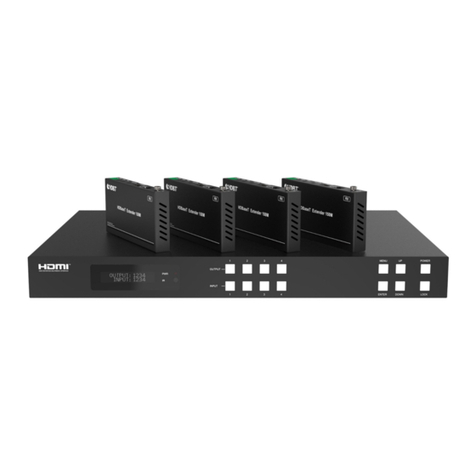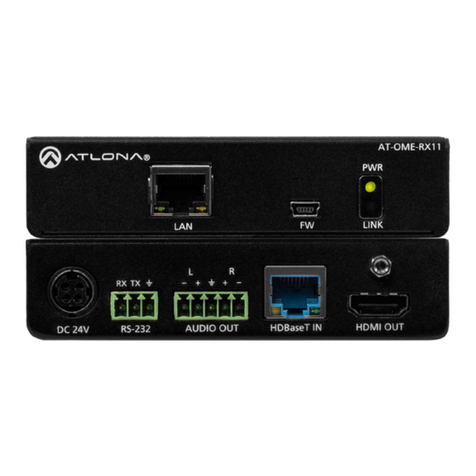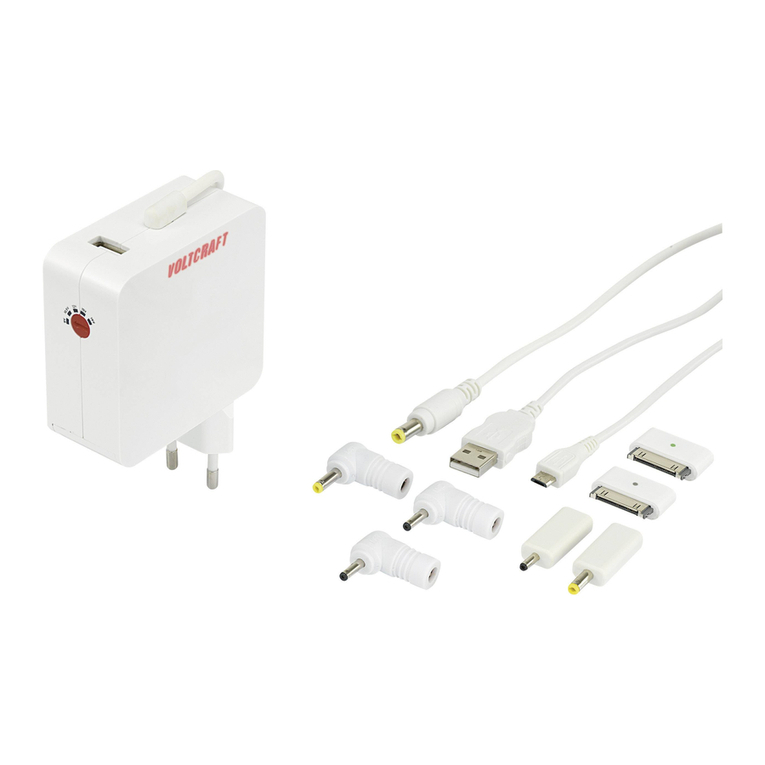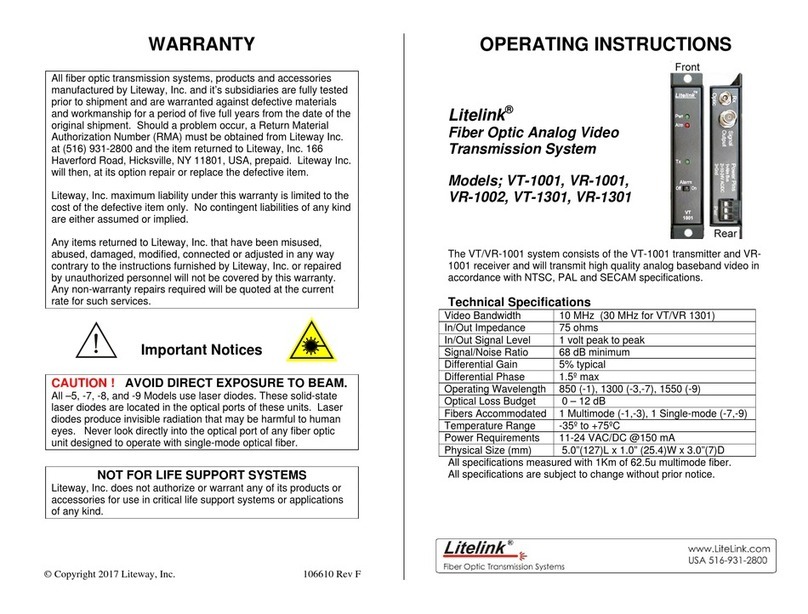
Elmes Electronic 11.2010 All rights reserved.
FOUR CONTROL CHANNELS WIRELESS SET WITH DYNAMIC CODE
CH4H
(EN)
The set consists of four relay outputs receiver and one hand-held transmitter designed for use in radio remote control and access control. The system uses KEELOQ®
(*) dynamic code technology and the receiver operates with all Elmes made 433,92MHz band transmitters and wireless detectors.
Operation
Activating transmitter stored in receiver memory results in setting on respective relay output. Depending on user programming, as described in sub-close 2 of the
programming procedures, two modes of the receiver’s relay outputs operation are possible: temporary output set on lasting from 0.5s up to 4h on each signal received
from transmitter and bistable outputs set on in on-off (latched) mode activated by consecutive signals received from the transmitter.
Cross table below shows possible signal output S (OC type) operation modes selected by jumpers JP1 and JP2:
JP2 ON JP2 OFF
JP1 ON Two grounding pulses are generated at output S on any relay set,
one grounding pulse – on any relay reset
JP1 OFF Grounding pulses are generated for channel 1 output relay set/reset only
Output S is permanently grounded if any of
learned transmitters signals low battery
JP3 - timing of grounding pulses at output S (jumper ON – 0.25/0.25s, jumper OFF – 0.5/0.5s).
JP4 – setting this jumper OFF allows mini alarm control panel function of the CH4H receiver – see detailed instructions further.
LED indication – lights green on all outputs off, lights red on any output on, blinks – when battery warning is on in any channel, as described below.
Low battery monitoring. This function is supported for Elmes transmitters type PTX50, GBX, CTX and RP. Blinking receiver’s LED indicates detected low battery
in one of the transmitters. Number of blinks in series corresponds to channel number where low battery is detected. Additionally, output S is grounded if jumper JP2 is
set off. Low battery warning sets off after battery is replaced and transmitter activated.
Anit-sabotage protection (TAMPER). Opening of the CH4H receiver’s housing is detected as TAMPER circuit break-in.
Installation (as shown on fig.1)
The CH4H receiver is designed to operate indoors with ambient temperature range from 0 to +40°C. Place of installation
should be dry and away from any electromagnetic power lines, radio transmitters, metal screening and other devices that
may cause interference and reduce operation range. Receiver should be installed 2 to 3 metres above floor level. Practical
operating range test using optional Elmes RMF3 monitor is recommended prior to firm installation. Receiver’s wire antenna
should be let loose downwards and not glued to any surface. Receiver’s outputs standby mode (NO-normally opened or NC-
normally closed) are selected by jumpers, individually for each output.
Specifications
433,92MHz band receivers and transmitters.
Four galvanic separated relay output channels: Rec. CH4Hhet outputs
rated 1A/30VDC or 0,5A/125VAC; Rec. CH4H outputs rated 1A/30VDC or 1A/120VAC;
Optional outputs rated 1A/230VAC on order. Output S rated 1A/60V max.
Outputs pulse operating mode timing: 0,25 second to 4 hours.
Receiver power supply: 12VDC, 20mA standby, 120mA max.
Manufacturer’s Limited Warranty: this product carries one year warranty as from the date of purchase. The warranty is limited to the replacement of faulty original
parts or repair defects of improper manufacture. Damage, faulty use or improper handling by the user or installer as well as any changes in product’s hardware or
software caused by the user violets the warranty and all due repair costs will be charged. Elmes Electronic shall not bear liability for any personal or material damage
resulting from any of its products direct, indirect or partial failure to operate properly.
(*) KEELOQ®is a registered trademark of Microchip Technology Inc., USA.
WIRELESS ALARM CONTROL PANEL OPERATING MODE OF CH4H RECEIVER
When JP4 is set off the Elmes CH4H receiver operates in wireless control panel mode (Fig.2 - connections diagram) featuring the following specifications:
- 8 wireless alarm zones for up to 40 Elmes wireless detectors and hand-held transmitters,
- arming and disarming by learned Elmes hand-held transmitter,
- alarm events memory (also on power cut off) with alarm zone indicated by LED,
- „panic” alarm function – hold pressed hand transmitter button for more than 2s,
- four relay outputs NO/NC type (jumper selected) for the following operation:
-output D1 – armed/disarmed signaling,
-output D2 −any application, sample: set on/off with 2nd button of two channel transmitter,
-output D3 – optical and/or audible alarm signaling,
-output D4 −24h alarm zone (detector’s sabotage TAMPER alarm or panic button function),
- audible signal control output OC type (open collector - 1A/60V) active on:
-system arming (one pulse), disarming (two pulses),
-alarm event recall from memory −6 short pulses on disarming of the system,
- bicolor LED featuring system warning and indication:
-system armed - lights red, disarmed – lights green,
-alarm event mem. - flashes red when the system is armed, and up to 2 minutes after disarming,
-alarm detector’s low battery warning - flashes green when the system is disarmed,
(number of flashes (1..8) indicates alarm event zone number or detector’s low battery zone),
- on system armed number of audible alarms is limited to five,
- non-volatile memory of system status armed/disarmed on power supply cut off.
Steps to follow in design of a simple wireless alarm system with the use of CH4H receiver as control panel:
1. Set jumper JP4 off. Erase memory of the receiver according to programming procedures.
2. Set alarm channel to 1 in all detectors with alarm channel selector, close detector’s boxes and program all detectors one by one to channel 3 of the receiver. The
first programmed detector corresponds to zone 1, second to zone 2, …eighth to zone 8, while the ninth again to zone 1. Up to 40 wireless detectors, 5 in each of
the 8 zones of the system may be programmed this way
3. Program one channel Elmes hand transmitters to channel 1 used for arming and disarming of the system. Two channel hand transmitters can also arm/disarm
the system: one button is used for arming/disarming and the other for controlling any other wireless appliance connected to output channel 2, for example
opening a garage gate. Programming two channel use second channel button. It will control channel 2 while the first channel button will be programmed to
channel 1 automatically.
4. Set the „on/off” (latching) output relay mode for output channel 1 and the required alarm timing (from 1s to up to 4 hours) in output channels 3 and 4.
Schematic diagram at Fig.2 above shows sample of basic alarm system with CH4H receiver as control panel (with learned detectors), wired outdoor siren & strobe and
power supply 12VDC (minimum 120mA + required siren current). Channels 3 and 4 with selected NO output mode.
+
D1D2D3D4 S
Receiver's board
_
12V
+
OUTPUTS
tamper
NC output
NO
NC
NO
NC
NO
NC
NO
NC
+
Buzzer
+
D1D2D3D4 S
_
Power
Siren
Strobe
++
- -
Wired siren
12VDC
+
-
supply
Fig.1
Fig.2



